Description
By Elisabeth Rochat de la Vallée
Digital Goods, Ebooks
ISBN 9780912111124
A note on our eBooks: Our eBooks use Digital Rights Management (DRM), managed by Adobe, a systematic approach to copyright protection for digital media. Our eBooks are currently compatible with the Adobe Digital Editions reader, paired with an Adobe ID. Please see the eBook help page for more information on setting up and reading your eBooks.
Your access key and instructions will be sent in a separate email, apart from your order receipt, after payment is successfully processed, usually within 24-48 hours.
Elisabeth Rochat de la Vallée’s remarkable digital work, “The Banner for a Chinese Lady Going to Paradise,” will be coming soon. It is a major contribution to the literature on Chinese philosophy and medicine. It also is an innovative eBook that enhances readers’ ability to study the text with frequent color illustrations and, not inconsequentially, at an affordable price.
In 1972, archaeologists excavated two burial mounds in the outskirts of Changsha the capital of an ancient kingdom of the land of Chu, and present capital of Hunan Province. Approximately twenty meters high, these mounds were assumed to be the sepulchers the tombs of Prince Ma Yin of Chu and his family during the period of the Five Dynasties (907-960 BCE). Hence the place-name: Mawangdui. Three tombs were discovered and proved to be something entirely different from a simple tomb of the era. The sepulchers dated from the second century BCE, at the beginning of the Han Dynasty. The second tomb had been violated and pillaged, but the first and third were intact. The funeral chambers harbored more than one thousand objects, including copies of medical writings on moxibustion that describe 52 diseases, and explore ideas of health, illness and longevity.
In addition to more than a thousand art objects the tombs also contained two copies of “The Book of the Way and the Virtue,” (Daodejing) that authenticate the relatively late versions that are available to us today; a text of “The Book of Changes,” (Yijing), and the “Spring and Autumn Annals”, (Chunqiu).
Elisabeth comments on the work:
In 1974, a short time after discovery of the Mawangdui Tombs in 1972, I was introduced to the Banner through a presentation made by Fr. Claude Larre during an International Symposium on relations between China and the West. He had understood the importance of this painting, not only from the archeological viewpoint, but also for the unique insight that it provides into China at the beginning of the second century BCE.
Through the use of symbols and mythic animals, the Banner reflects the beliefs of the Chinese people on how life appears, develops and disappears, as well as their hope to pass into the peace of Paradise. With splendid drawings and sumptuous colors, it offers anyone a direct grasp and a feeling for the emerging of life as a crossing of yin and yang, of its development as an ascension from the depth of the Earth to the everlasting serenity of Heaven.
The Banner is like a vivid illustration of what we read in the Chinese classics, a diving into the soul of ancient China. Reaching the depths of hope and beliefs of people living far away and long ago, we access what they have in common with us. The Banner speaks directly to us, not only of ancient China but of our present-day life and expectations.
These are the reasons why I fell in love with the Banner and accepted the challenge to present it to my readers.
Does the book tell you how to treat a dread disease? No.
Does it make the use of medicinals in formulas crystal clear? No.
Does it describe previously unknown distinctions between acupoints? No.
What then does it teach us, if not the keys to treatment?
It teaches us the context in which the most profound thinkers of the era understood the medical classics at the root of Chinese medicine. It shows us what they thought about life and the afterlife. Specifically, it tells us how they applied the concepts of yin and yang to the make-up and function of the world beyond human senses. This is one of the most important things we can know because how we interpret Chinese medical principles can only wander away from their origin if we have a false sense of the culture in which those ideas arose and flourished. Without the view this e-Learning gives us, we risk accepting ideas that would be impossible for the ancient scholars to have believed.
In this regard, one of the most interesting aspects of The Banner is the elaboration of yin / yang and the five phases in its cosmological symbols. In exactly the same way the qualities of the organs are complexes of yin and yang – yin within yang, yang within yin – the dragons portrayed on the banner are symbolic lessons in five phase and yin – yang distinctions, expressed as shapes, colors, contours and symbols. The Banner shows us a cosmos where the principles of systematic correspondence are the only principles, yin – yang is the only reality.
Elisabeth Rochat de la Vallée has given us a look inside the minds of humans who speak to us through the human arts of millennia past. This doesn’t happen very often. That a small group of scholars had penetrated this deeply into the classical literature of China so soon after Soulie de Morant’s first comprehensive acupuncture text is as remarkable as the book itself.
Praise for The Banner for a Chinese Lady Going to Paradise -eBook
“Elisabeth draws on her deep understanding of Chinese mythology, symbolism, history and the classics to analyse this beautiful funeral banner from the Han dynasty. The banner has dense symbols which are meticulously unpacked one at a time, with copious, detailed explanations. Each separate image is given a detailed grounding in classical Chine thought and culture. Then the banner is examined and explored as a whole, in its three parts (relating to the three powers of Heaven, Earth and Humans tiandiren 天地人) and with relation to more hidden meanings or symbols.
This is a fantastic introduction and path to the heart of Chinese thought, through the symbols and images of the Mawangdui banner. A must read for anyone interested in classical Chinese culture and especially, Chinese medicine.”
Deborah Woolf
“What a wonderful book! Through the study of the Mawangdui funeral banner Elisabeth Rochat de la Vallee provides a detailed, meditative, study of the organization and movement of life and death – a guide that gives context to the modern practice of traditional Chinese medicine, arts and sciences. This beautiful exploration and analysis provides a comprehensive overview of this vision of life – a superb resource for practitioners of traditional Chinese medicine, movement and martial
arts, astrology and fengshui.
Whenever I am asked for advice from students and practitioners of TCM, I always suggest the study of the underlying philosophy and logic of the medicine. This never fails to bring better results in the clinic and satisfaction in the process. Along those lines, I have already found myself recommending this book regularly!”
Sean Fannin – Center for Traditional Health Arts
The Banner for a Chinese Lady Going to Paradise is a most unusual
ebook. At first glance, it appears to be a painstakingly detailed description
of a single artifact created in the Southern Chinese kingdom of Chu at the
beginning of the 2nd century BCE—the exquisitely preserved funeral
banner of the Marchioness of Dai, discovered in 1972 at the famous
archeological site Mawangdui in today’s Hunan Province. As the analysis
unfolds, however, it becomes clear that the distinguished authors use the
banner as a gateway to the cosmological backdrop of the classical period
of Chinese thought as formulated during the Warring States Period (481-
221 BCE) and the subsequent dynasties of the Qin (221-207 BCE) and
Western Han (206 BCE – 9 CE). As such, this seemingly esoteric text
becomes relevant not only for lovers of ancient China and traditional
funeral rituals, but for anyone who still utilizes the symbol science of early
China to make sense of our world today.
This group first and foremost includes students and practitioners of
Chinese medicine, who continue to utilize archetypal concepts like the
inextricable connection between body, mind, and spirit; the trinity of
Heaven, Earth and Humanity; yin and yang; the five phase elements; and
other symbolic markers that have found their classical definition and artistic
expression on the banner. This may explain why the authors, Elizabeth
Rochat de la Vallée and the late Father Claude Larre chose to
comprehensively cover such a particular topic in the French edition of this
book that was originally published in 1995. The prolific writer and translator
team, after all, is best known for their insightful introductions to the medical
theories laid out in the Huangdi neijing (The Yellow Emperor’s Classic of
Medicine) and other foundational texts of classical Chinese medicine.
Lady Dai died in 169 BCE and was interned in an elaborate mausoleum
next to the tomb of her husband, the Commanding Governor of the vassal
kingdom of Changsha in the Southern region of Chu. While the grave of her
husband had been looted, hers remained fully intact and the sarcophagus
and accompanying artifacts appeared perfectly preserved. The grave site,
hence known as Mawangdui, contains not only more than 1,000 artifacts
that give us unique and direct insight into the civilization of the Han
dynasty, but also provide scholars of Chinese history with the earliest
versions of many of the seminal texts of Chinese literature, such as the
Yijing (Classic of Change), the Daodejing and early primers of Chinese
medicine—together known as the Mawangdui Silk Texts.
The body and burial vault of the Marchioness are considered one of the
most important archaeological discoveries of the 20th century. In her tomb,
four coffins of decreasing sizes envelop one another. The silk banner that is
the main subject of this book was found draped over the innermost coffin.
About two meters long and exquisitely preserved, it is a one-of-a-kind
painted canvas that vividly depicts the cosmology and symbolism of the
formative period of classical Chinese thought. Commissioned by nobles of
the Han empire from a master artisan in the southern Kingdom of Chu, it is
a funeral banner intended to guide the soul on its ascension to Heaven.
Similar to a map for travelers in the realm of the living, it symbolically
represents the world after death in its diverse aspects.
The banner features elaborate images of shamans, the sun and the moon,
dragons, phoenixes, the toad and the hare, cranes, owls, leopards, turtles,
Mt. Kunlun, the Isles of Paradise, and other icons typical for Han dynasty
cosmology and the formative period of Chinese medicine. The intrinsic
value of this publication, however, is the detailed fashion in which the
authors decipher each of the banner’s phenomena by taking the reader on
a journey through the classical literature of the time: the Classic of Change
(Yijing), the Book of Rites (Liji), the Songs of Chu (Chuci), the Classic of
Mountains and Seas (Shanhaijing), the Daodejing, the Zhuangzi, Master
Lü’s Spring and Autumn Annals (Lüshi chunqiu), The Commentary of Zuo
(Zuozhuan), and the Huainanzi. These are the seminal works that define
the underlying concepts of holistic Chinese system science and its practical
applications, including the foundational concepts and the terminology of
Chinese medicine.
This is, in my opinion, the main reason to celebrate the authors of this book
and their consistent choice of topics: the unrelenting message for modern
Chinese medicine practitioners that their craft, on the deepest level, is a
way of thinking rather than a bag of technological tricks; a commitment to
life-long learning and the observation of nature as practiced by ancient
observers of the cosmos and their timeless ancestral wisdom. The Banner
for a Chinese Lady Going to Paradise, therefore, is capable of inspiring
readers of all backgrounds, similar to other exquisite excursions into
ancient cosmology and human enlightenment such as Susan Brind
Morrow’s naturalist presentation of the Egyptian Pyramid Texts, The
Dawning Moon of the Mind. For my part, I look forward to future
publications by Elizabeth Rochat de la Vallée!
Heiner Fruehauf, PhD
Founding Professor, College of Classical Chinese Medicine
National University of Natural Medicine
Portland, Oregon in January of 2021


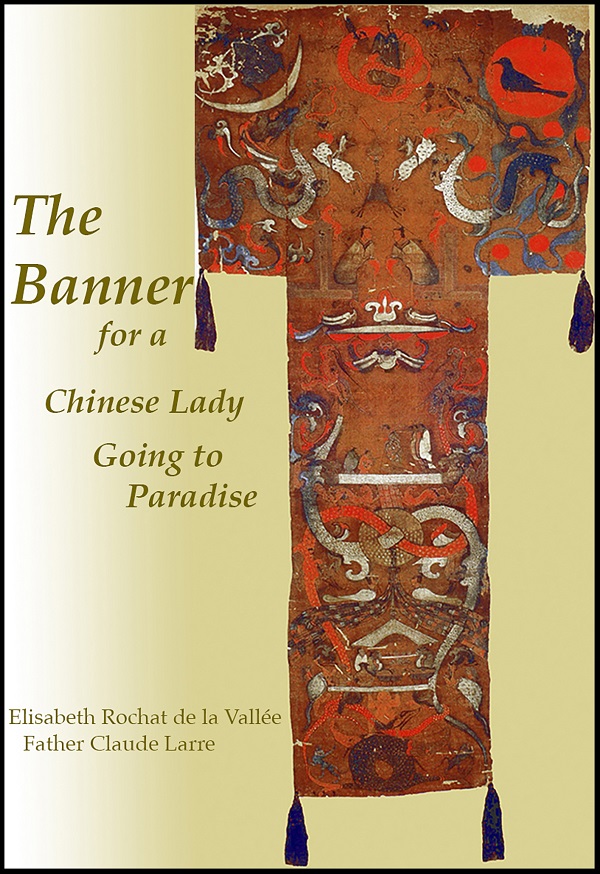
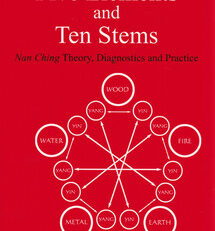
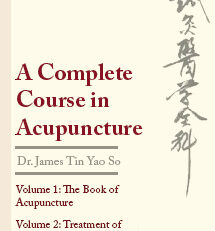
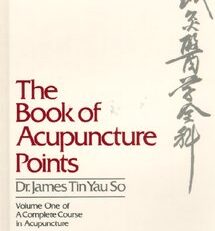
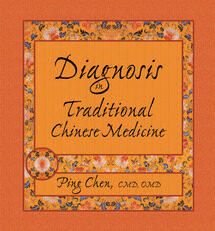

Robyn sodders –
This is an incredibly rich book. I received an advanced copy and have been reading small amounts at a time. I don’t want it to end as it is an absolutely gorgeous book. Elisabeth weaves in the translations with history and rich images. I would highly recommend this book!